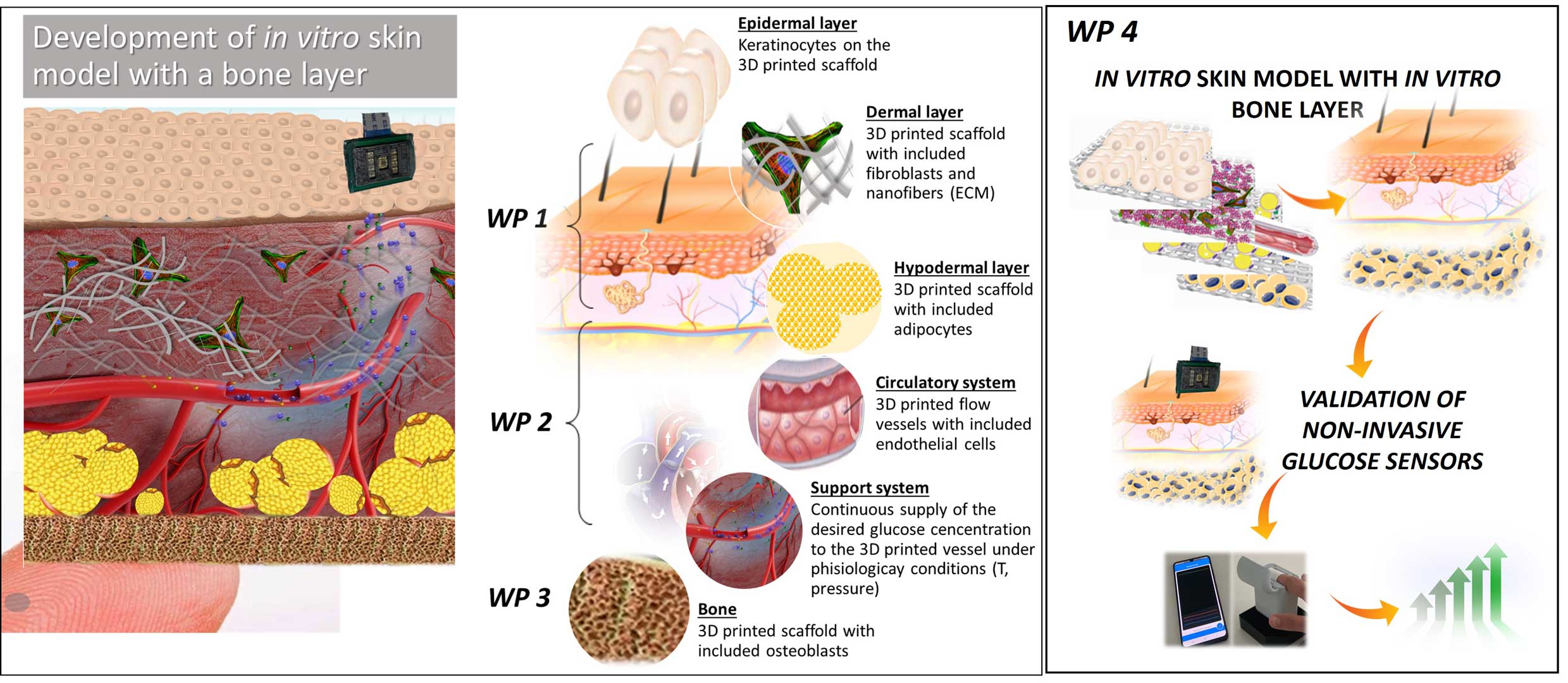New complex, bone layer incorporating human in vitro skin model for testing of non-invasive glucose sensors
Financing, programme, call:
Public call for the (co-)financing of research projects in 2022 – ARRS

Partnering organisations:
FS UM, FKKT UM, Siatlab GmbH

Coordination:
Tina Maver
Duration
1.10.2022 – 30.9.2024
back to the list
Short description
Reference number:
L7-4494
In this project, we will use advanced biomedical engineering methods (e.g. 3D bio-printing and core/shell printing) to create a new in vitro model of human skin that will simulate all important skin layers in their full physiological complexity. It will provide a reliable platform for various functional in vitro testing methods (e.g., efficiency testing of non-invasive sensors, testing of pharmaceutical and cosmetic products, etc.). Since the development of non-invasive sensors is growing and they require a reflective surface to function (in the case of skin, this is the bone), we will additionally include an in vitro bone layer on medical steel underneath the skin model to ensure that non-invasive sensors can be effectively tested. The specially designed skin layers will include: i) an epidermal layer with keratinocytes, ii) a dermal layer with fibroblasts, iii) a subdermal layer with adipocytes, iv) a bone layer made from a metal substrate and osteoblasts, v) and a circulatory system of artificial vessels made with endothelial cells. The latter will be enabled by an integrated pump system that can simulate blood circulation in the skin. All layers will resemble the integrity of the skin not only by the incorporated cells and mimicking the structural (3D architecture) and (bio)chemical (by using native extracellular matrix components or similar chemical constituents) properties of the respective tissues/layers, but also by the functional properties of the simulated tissues (e.g., blood circulation through the circulatory system, which allows mimicing the physiological/pathophysiological flow in the vessels). Such a complex skin model will serve as a representative in vitro testing platform, comparable to the in vivo environment, in/on/at which different in vitro testing methods could be performed and/or newly developed. Such a complex in vitro skin model will allow comparable in vitro testing to in vivo testing on/through/in the skin.
The UM MF is the coordinator of the project and will be involved in all work packages of the project, supported by the partners FS UM and FKKT UM with specific methods.
